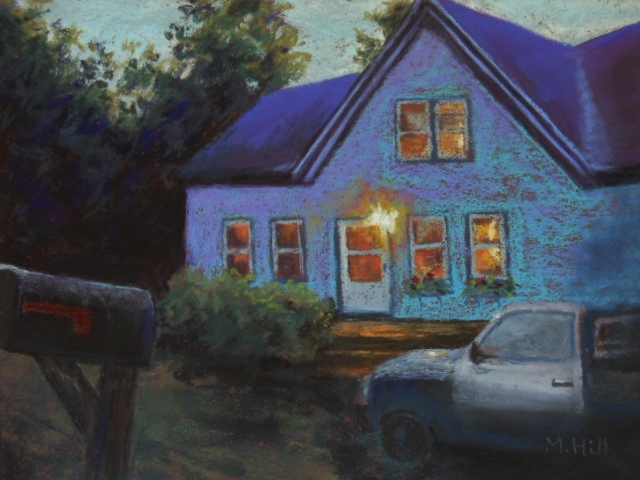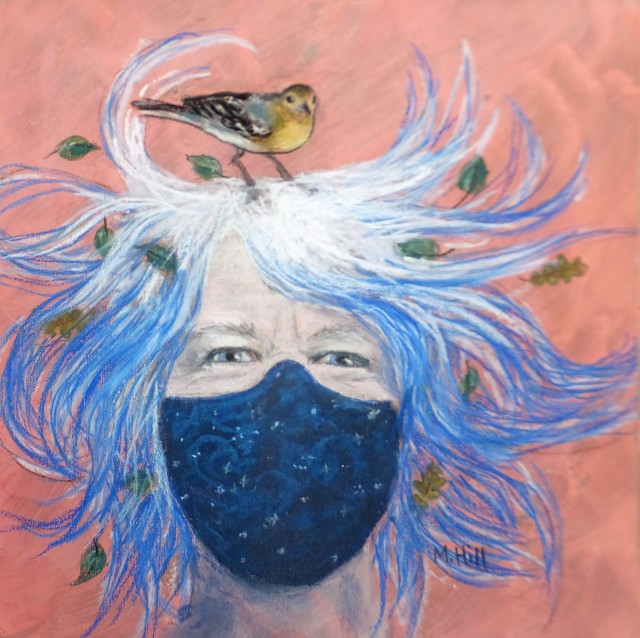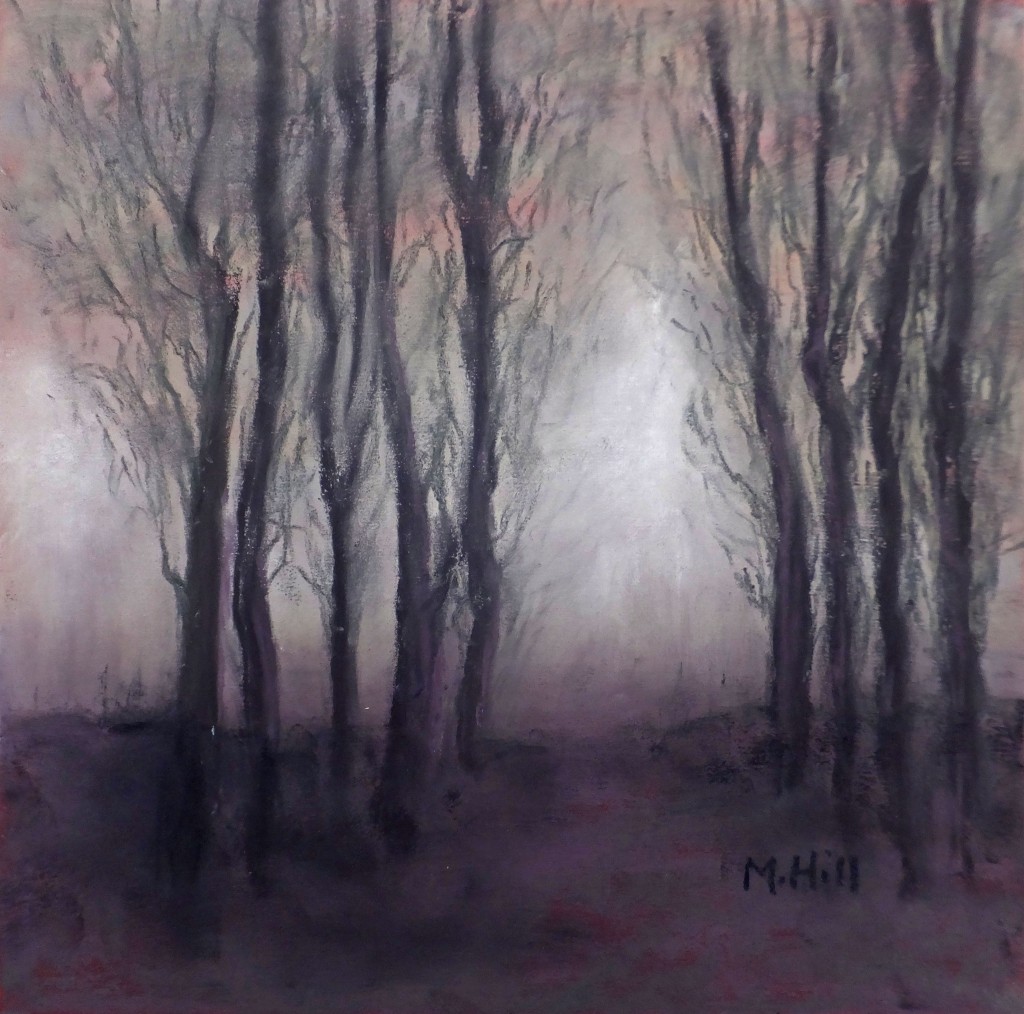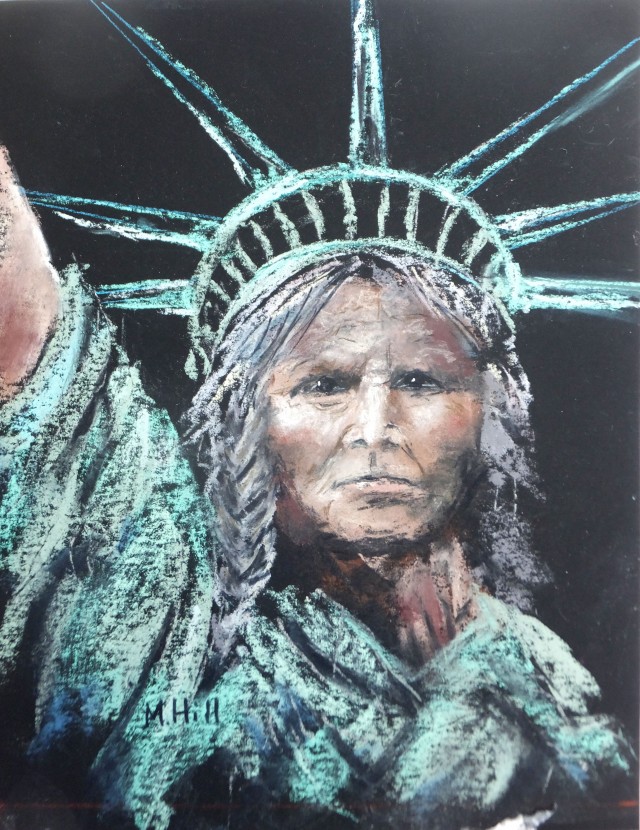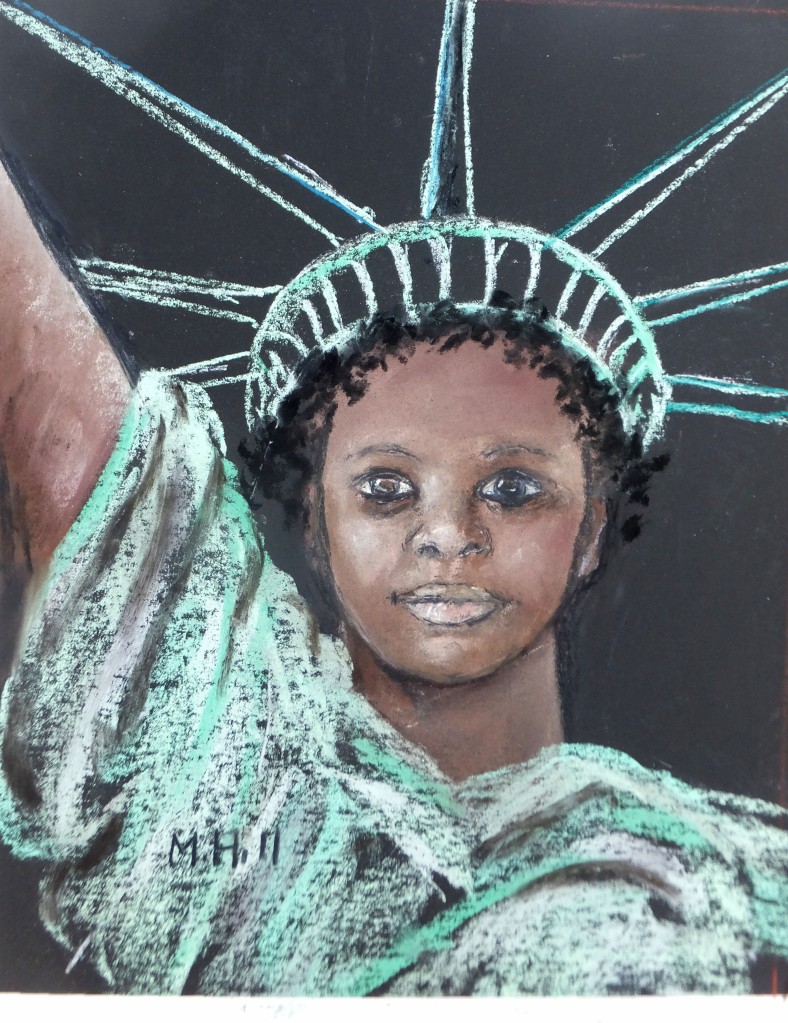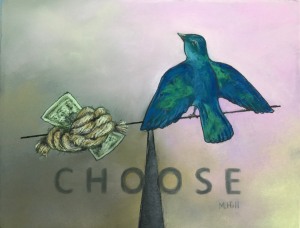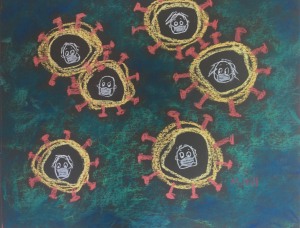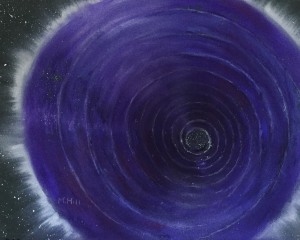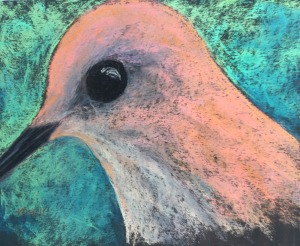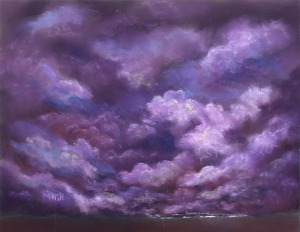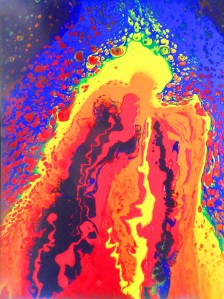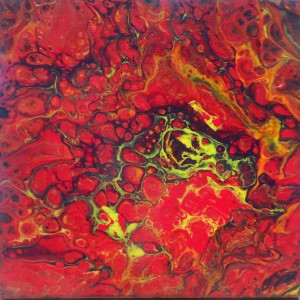Where do abstracts come from? Damned if I know. I know where most representational painting comes from: I see something that strikes me and even if I change it, I am trying to convey the thing that called to me initially. Abstracts are an entirely different matter. They are not a response to something outside. Sometimes they are a response to something inside, like this one….
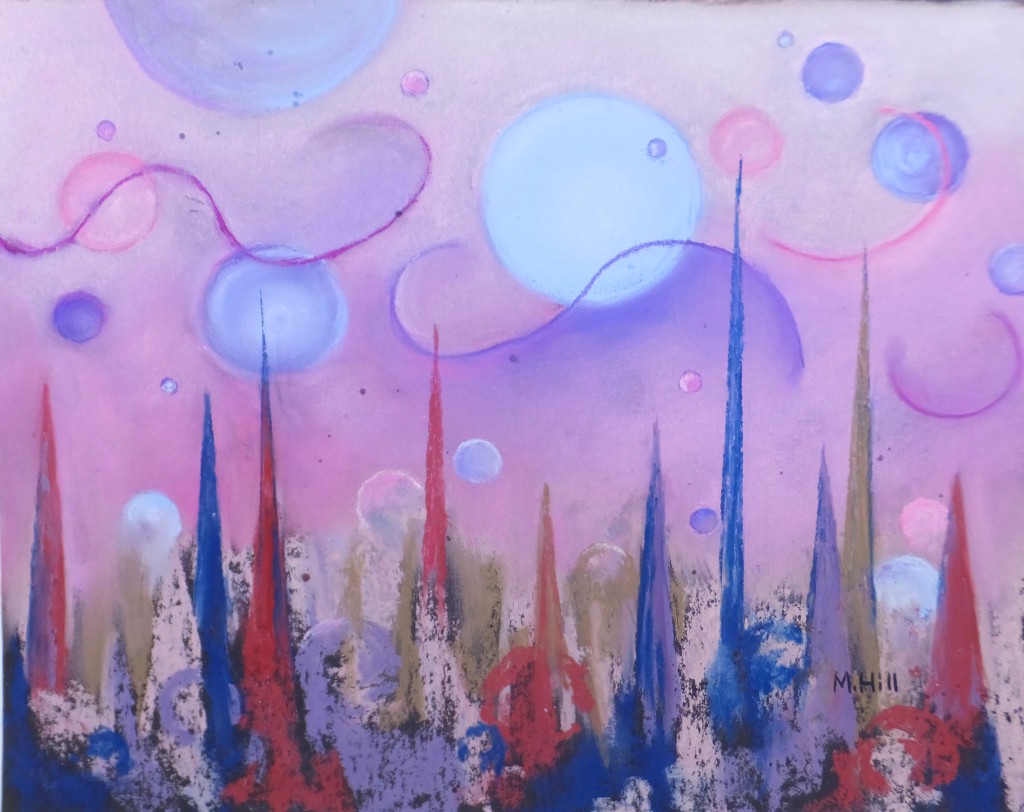
My two most recent abstracts, though, are from something more, well, abstract: an impulse to say something with color. Both paintings developed from the center outward, meaning that I started by thinking about that horizontal line and a color that I wanted to put next to it. Then I played with it in my mind, imagining different colors and how they might play off one another as well as how they might feel all together. Often I turned it over in my mind as I went to sleep. I spent weeks doing this. Eventually I tried painting little sketches, about 5″ x 7″, to see how the colors looked in reality.
Finally, when I had a sense of where I was going, I went to the easel for the real thing. But even then, the painting morphed and changed as I went along. After a certain point, whether abstract or representational, you have to put aside your image and let the painting tell you what it needs. I realize that this sounds kind of “woo-woo,” but it’s not, really. I start to see where I could improve color harmony, or balance; where I think something would be better off softened and pushed back, or where more detail or a touch of light would make it sing.
Here is “Hypothesis,” which is 11″ x 17″

It’s almost a landscape, isn’t it? It started that way in my mind, as a kind of simplified landscape, with the bright green line against the magenta. But then I wanted a little variation in the color of the line, which looked too static, and added the turquoise. I had intended initially to have smooth transitions from the yellow to orange underneath and the magenta to purple above, but as I was putting the color in, I found myself liking the variability in the transition, so it stayed, and even increased.
This is “An Alternative Explanation,” which is 12″ x 18″.

This painting started similarly, with the idea of the red-orange line against that bright yellow-green. This one really does not look like a landscape at all, except that it sort of has something you could see as a horizon. I intended that the red-orange line be more even, but as I drew it in the initial sketches, I got sloppy. And then I started to correct and ended up with a forked line, and then I liked that even more. The yellow-green looked too blah when I put it in and I started varying the thickness. As one part on the left started drooping down, I decided to bring it down to the bottom of the paper. Some of the green looked a little wave-like, so I went with that. I forget how the red “stars” in the top came about, but I share critiques with a painter friend (Cindy Griffith), and she suggested making them slightly more prominent. You don’t really see them right away, but you do see them, and they echo that red line.
I have no idea where the titles came from. I guess I wanted titles that were as abstract as the paintings, and these popped into my head, so there you are!



